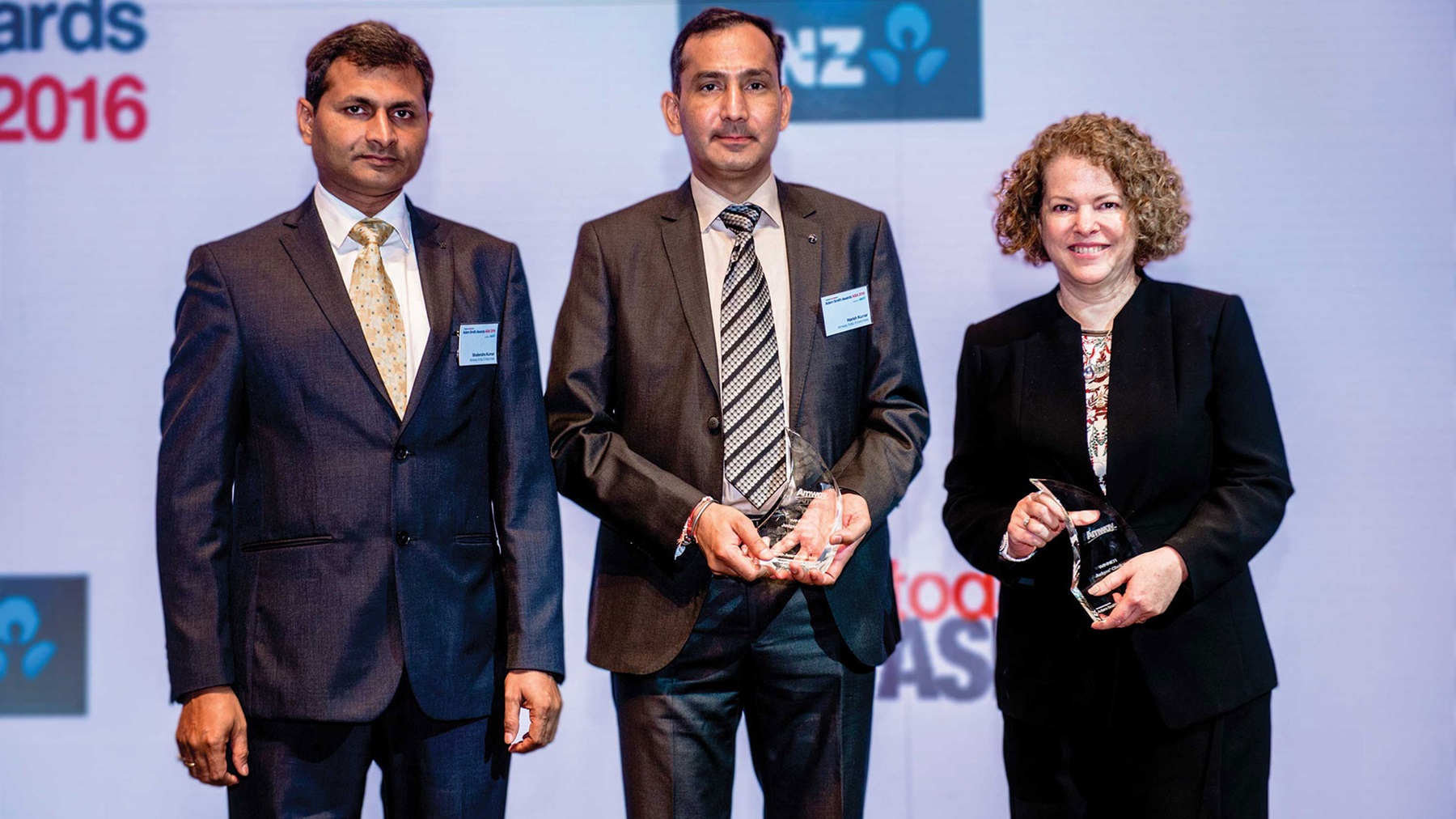
Photo of Shailendra Kumar, Harish Kumar, Amway India Enterprises and Deborah Mur, Citi.
This case study profiles several solutions in India across the entire accounts payables (AP) and accounts receivables (AR) spectrum, comprising debit, credit and prepaid cards to cash and ATM. This is an impressive suite of solutions on display from this major consumer products organisation.
Bikash Mukherjee
AVP – Treasury Head

Established in 1995, Amway India is a wholly owned subsidiary of Amway Corporation, USA, with a global turnover of US$11bn, offering Indian citizens an unparalleled opportunity to own and operate their own business, selling more than 140 high quality consumer products.
in partnership with

The challenge
Amway India Enterprises (AIE) transact across multiple modes of payment. In early 2016, they identified two major challenges to address which have existed in India for more than a decade; one on the AP side, the other AR related.
Amway also wanted to reduce the number of transactions settled in cash and to provide innovative payment solutions to the Amway distributor universe to purchase Amway products.
Other challenges faced by Amway concerned their collections in North East India, due to the poor infrastructure, lack of connectivity and low levels of banking penetration. Cheques in this part of India were drawn on banks without a core banking system, meaning they were taking up to 12 days to clear. The issue was compounded by a protracted reconciliation process and in many cases cheques were returned or rejected.
Amway was also experiencing difficulties with their cross-border funds transfer (CBFT) for service payments. Many of the challenges were caused by the extensive documentation required by the banks.
Bikash Mukherjee, AVP – Treasury Head recalls, “Our objectives were clear. We needed to reduce our operating costs, generate additional revenue and protect and increase our market share, reduce the collection period and introduce an automated solution for invoice reconciliation. Finally, we wanted to reduce the turnaround time (TAT) of CBFT payments from five days to one day.”
The solution
Amway India entered into an agreement with ITZ Cash Card Ltd. in 2015 for a group card solution because of their technological capabilities, strong presence in India, market acceptability and reputation.
Despite only having a limited presence in North East India, Citi was selected and invited to visit the region, where 50 customers were met to better understand the challenges Amway faced. Amway and Citi decided to pilot the National Payments Corporation of India’s (NPCI) centralised collections platform – Automated Clearing House (ACH) in North East India. They also developed a host-to-host connection to Citi which was integrated with Amway’s billing system.
The CBFT solution was also provided by Citi, which has completely removed the need for paper-based submissions and has digitised the end-to-end CBFT payments cycle.
Amway also worked with Standard Chartered Bank on a segregated MIS solution and a standard authentication and authorisation approach for its users and authorisers. An industry standard PKI-based digital certificate was used for login and authorisation over the bank’s Straight2Bank solution.
Best practice and innovation
Amway India has overhauled its business model in the North East region of the country and has made it more secure and efficient. The solution has given an impetus to their business in the region and Amway hopes that other companies will replicate this solution in the North East. Following the successful launch of the ACH solution in North East, Amway are now also contemplating roll-out of this solution across the country.
The market-first AP solution for CBFT payments deployed by Amway India is another unique example of liaising with its bank and the regulators to streamline the payment process and make it more efficient without the need to change existing regulations.
Mukherjee concludes, “By harnessing technology, both on the AP and AR front, Amway India has not only been able to achieve our business goals of increasing revenues, footprint, and efficiencies but has also been able to make a social impact in an underdeveloped and militancy-prone region of the country.”
Key benefits
- Process efficiencies.
- Significant cost savings.
- Risk mitigation.
- Cash volumes significantly reduced – from 78% to 7%.
- The DSC solution was cost effective, replicable and was turned around very quickly.